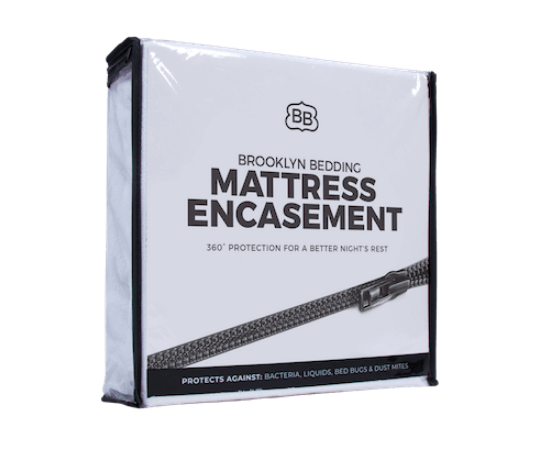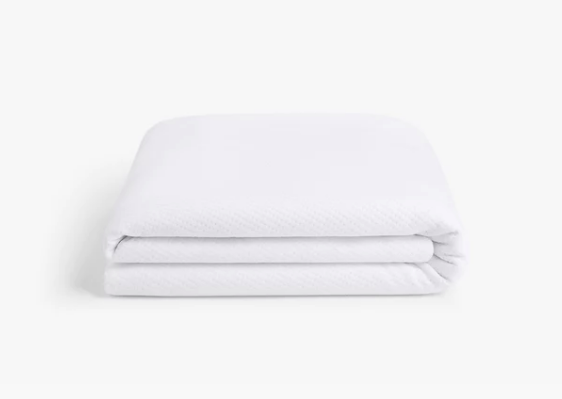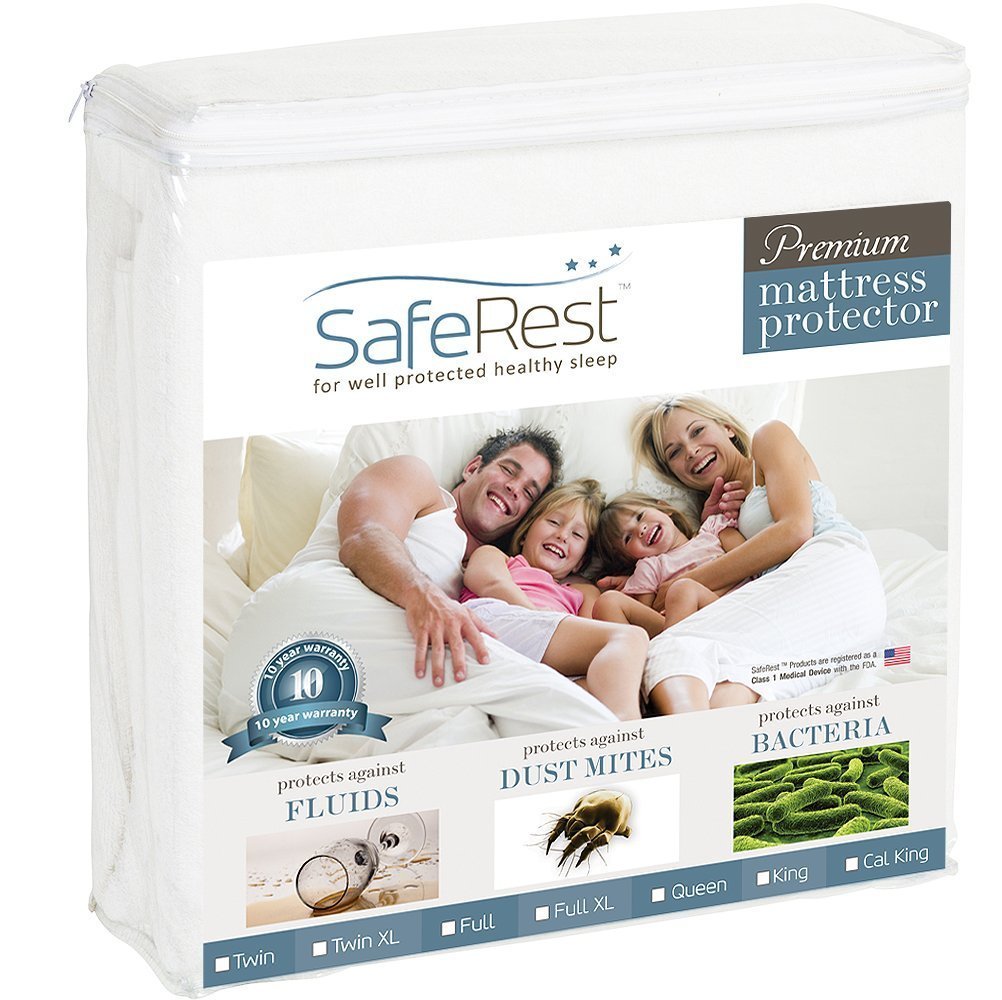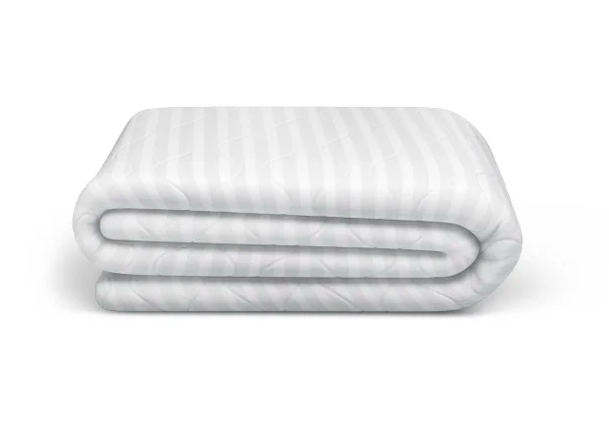Buying Guide – How to Choose a Mattress Protector for Bedwetting
Bedwetting affects children and adults alike. Although there is no known cure for bedwetting, sleepers prone to wetting the bed can take precautions to safeguard their mattress against permanent stains and fluid damage. For many, the most effective course of action is to use a waterproof mattress protector, a thin, machine-washable layer that prevents liquids from seeping onto the bed.
This guide looks at the primary reasons why children and adults wet the bed. We’ll also cover how mattress protectors are made, some pros and cons of using, how to care for these products, and some additional tips for protecting beds against fluid damage.
Please note: Tuck.com is not a medical website, and our product recommendations should never substitute advice from a licensed physician or medical professional. If you or a loved one are experiencing bedwetting and would like to learn more about symptoms, causes, and treatment options, please consult your doctor for more information.
Why Do Sleepers Wet the Bed?
According to the Mayo Clinic, bedwetting – also known as nocturnal enuresis – mostly affects children under the age of five. By the time they reach five years, most children are fully toilet-trained. However, bedwetting often persists through age seven. Although there is no known cause or cure for juvenile bedwetting, medical experts have pinpointed the following common factors for children:
- An exceptionally small bladder that cannot hold larger quantities of urine during the night.
- The body’s inability to recognize the bladder is full, often due to issues with the child’s nervous system.
- A hormonal imbalance that reduces production of the anti-diuretic hormone that suppresses the need to urinate while asleep.
- A urinary tract infection. In addition to bedwetting, symptoms of this include daytime loss of bladder control, frequent and/or painful urination, and red/pink urine.
- Obstructive sleep apnea. In children, OSA typically occurs due to excessively large tonsils or adenoids.
- Juvenile diabetes. For some children, bedwetting is the first indication to doctors they are diabetic.
Additionally, there are known risk factors for childhood bedwetting. These include a family history of bedwetting, stress or anxiety disorders, and attention-deficit/hyperactivity disorder (ADHD).
For adults who wet the bed, the condition known as urinary incontinence is most often to blame. There are several types of incontinence, all of which lead to loss of bladder control and involuntary urination. Stress incontinence is triggered by sudden bodily movements, such as coughing and sneezing. Overflow incontinence is characterized by continuous dribbling, even after urination. Those with urge incontinence frequently have sudden needs to urinate, especially through the night, and cannot reach their bathroom before their bladder releases.
Many conditions and factors can lead to urinary incontinence. These include:
- The consumption of foods and drinks that are considered diuretics, especially before bed. These include alcoholic and caffeinated beverages, chocolate, and spicy, sugary, or acidic foods. Certain heart and blood pressure medications, as well as vitamin C, are considered diuretics.
- A treatable medical condition, such as a urinary tract infection or chronic constipation.
- Pregnancy and childbirth, as well as complications from menopause or a hysterectomy procedure. Women are more likely to experience urinary incontinence than men.
- Prostate cancer, or an enlarged prostate.
- Neurological disorders such as multiple sclerosis, Parkinson’s disease, or a stroke.
For adults, the primary risk factor for urinary incontinence is age. Many older people have less strength in their urethra and bladder muscles, which can make holding urine difficult. Other factors include smoking and obesity.
Bedwetting can cause physical complications, namely painful infections, rashes, and sores where the skin is exposed to urine. Incontinence can also make adults more vulnerable to urinary tract infections. Additionally, bedwetting can have serious psychological implications for children and adults. Episodes can lead to embarrassment and anxiety, which in turn affects socialization and personal relationships.
Although there is no cure for bedwetting, sleepers can prevent permanent damage to their bed by using a mattress protector. In the next section, we’ll look at how these products are made and intended to function.
Bedwetting Mattress Protectors: Common Materials and Designs
Most mattress protectors resemble fitted sheets. They have four elasticated corners that hook over the mattress, allowing the layer to remain in place throughout the night. These protectors typically have a pocket depth of at least 14 inches, allowing them to be used on most mattresses sold today, and many have loops for added stability.
Alternatively, mattress encasements have a zippered opening that allows them to fit around the entire mattress.
Looking at material construction, mattress protectors usually have two key components:
- Surface: The surface of a mattress protector can be made of any fabric. Manufacturers often use softer, more comfortable materials such as cotton, down, or polyester. Many also have spandex or elastane to give the material some extra stretch.
- Backing: The backing is the protector’s waterproof component. It prevents liquid from seeping through the layer and damaging the mattress. Common materials for the backing include vinyl-free polyurethane and polyethylene.
A properly constructed mattress protector stops urine from reaching the bed’s surface, and many control odor to some degree. They also safeguard the mattress from other types of stains, including sweat and food spills. And because most protectors are hypoallergenic, they can prevent the spread of bed bugs and dust mites.
As effective as mattress protectors are, there are some downsides associated with them. Next we’ll look at some of their most notable pros and cons.
Pros and Cons of Using a Mattress Protector




